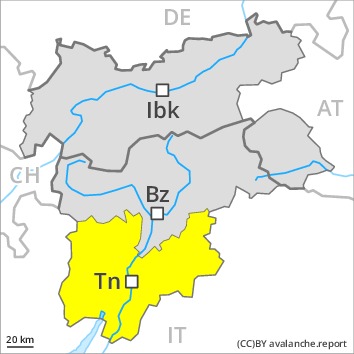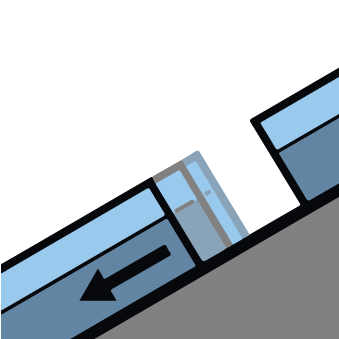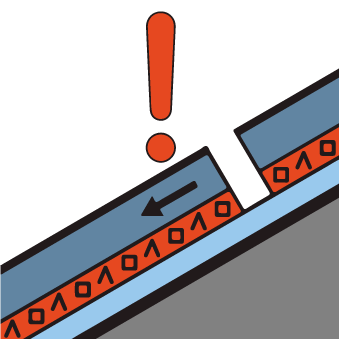
Danger level
 | 2000m
|
Avalanche Problem
 | | Wind-drifted snow |
|  | |  |
 | | Gliding snow |
|  | |  |
 | | Persistent weak layer |
|  | |  |

Wind slabs are to be evaluated with care and prudence.
The wind slabs are to be evaluated with care and prudence in particular in rocky terrain. They can be released easily or naturally in all aspects above the tree line. This applies in particular on very steep slopes, and adjacent to ridgelines.
Additionally in some places moist avalanches can also penetrate deep layers and reach medium size.
Slight increase in danger of dry and moist avalanches as a consequence of warming during the day and solar radiation. Areas with glide cracks are to be avoided as far as possible. An appreciable danger of gliding avalanches exists.
Ski touring and other off-piste activities, including snowshoe hiking, call for meticulous route selection.
Snowpack
dp.6: cold, loose snow and wind
The meteorological conditions facilitated a gradual strengthening of the near-surface layers in particular on sunny slopes. The fresh wind slabs remain for the foreseeable future prone to triggering in particular on steep shady slopes. This also applies in gullies and bowls below the tree line.
Faceted weak layers exist in the centre of the snowpack in particular above the tree line.
Towards its base, the snowpack is moist and its surface has a melt-freeze crust, in particular at low and intermediate altitudes.
Tendency
As a consequence of highly fluctuating temperatures the snow drift accumulations will stabilise during the next few days. A latent danger of gliding avalanches exists.











